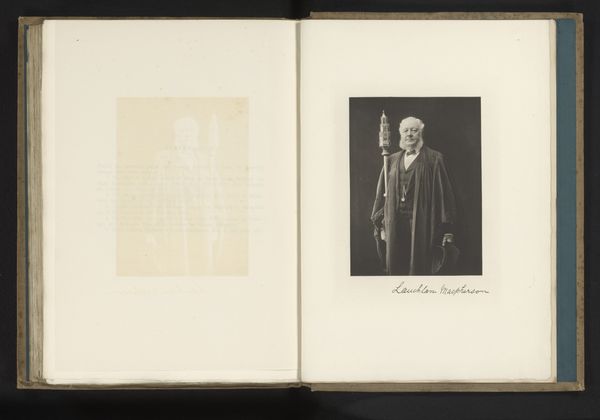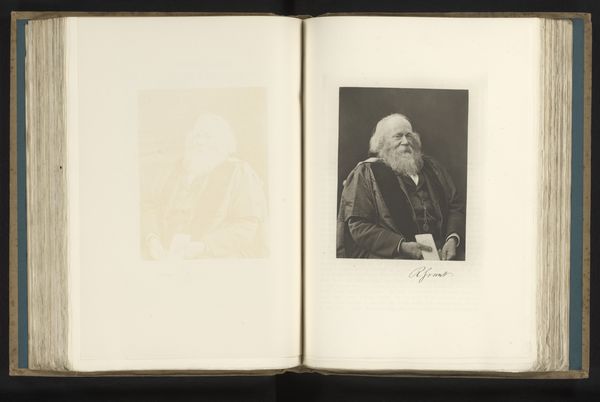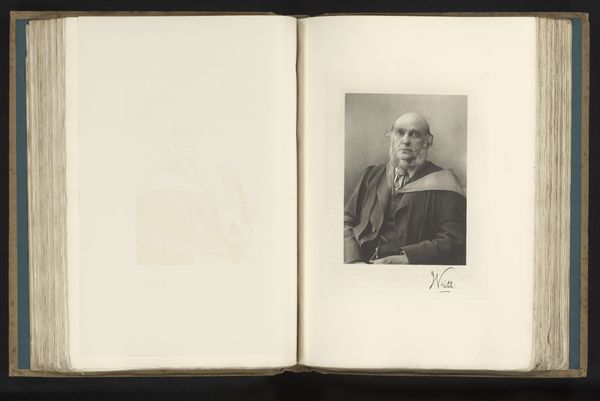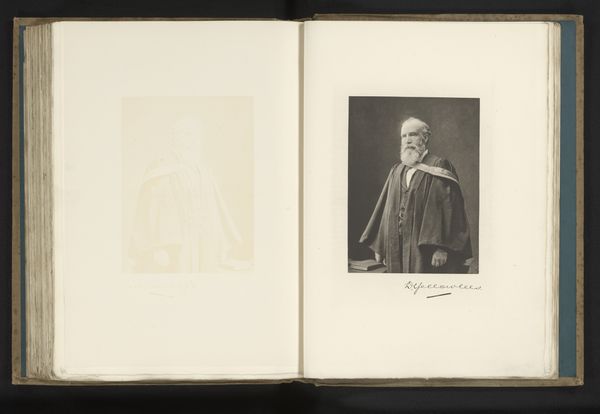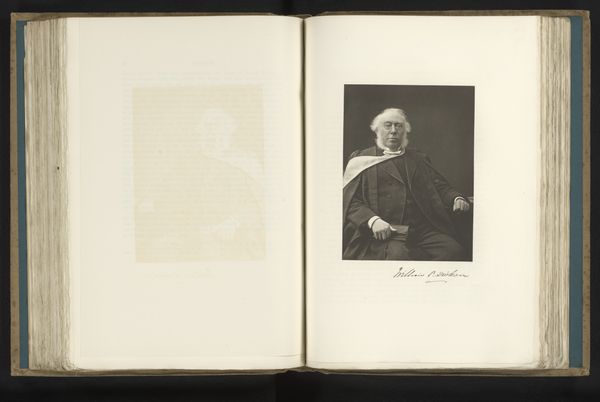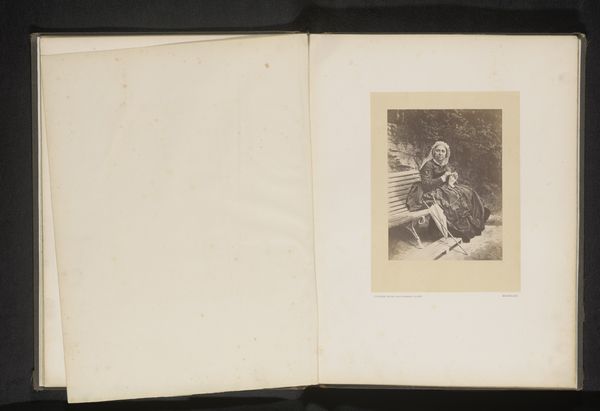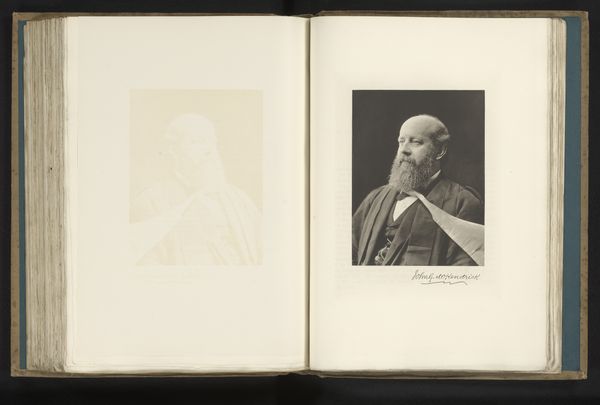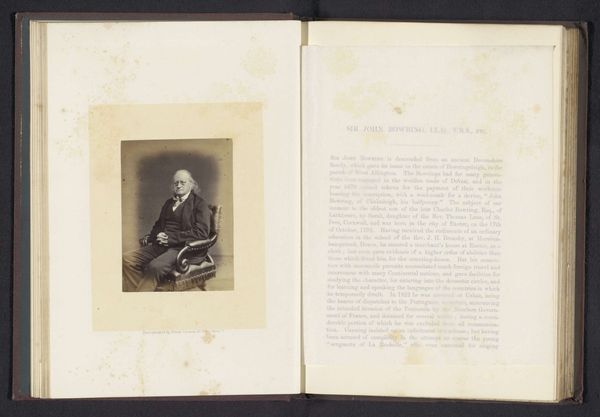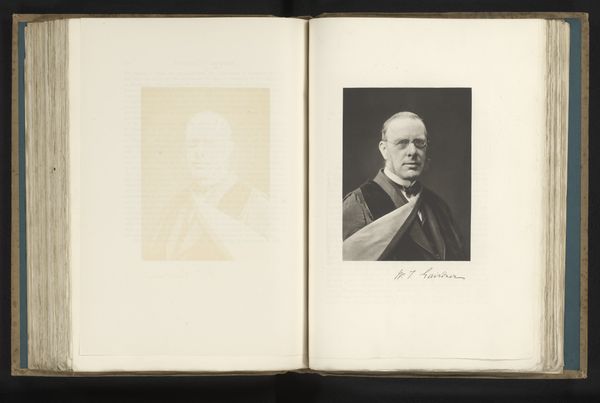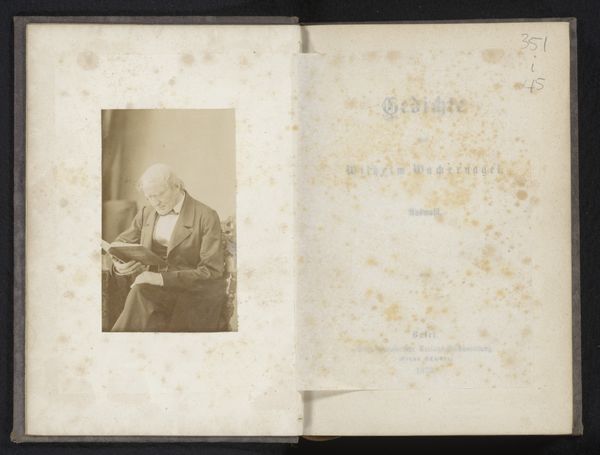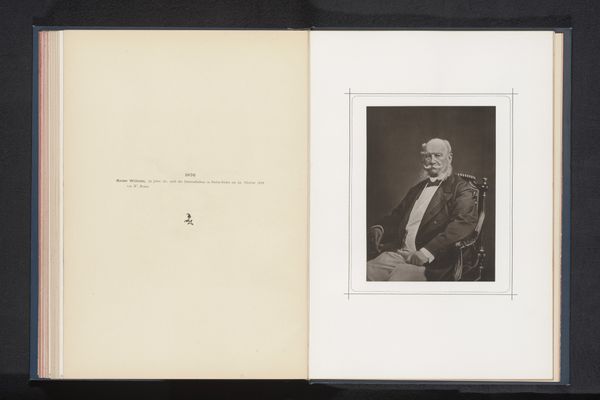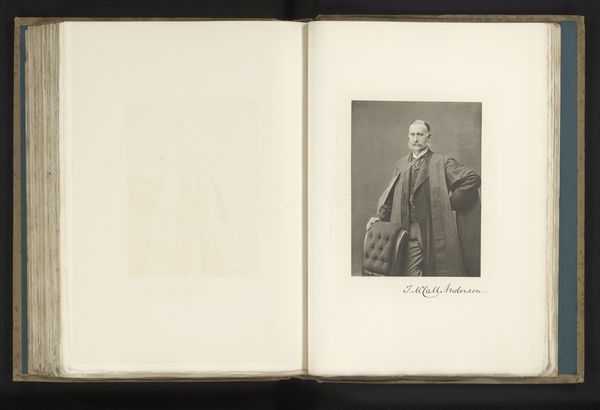
photography, albumen-print
#
portrait
#
photography
#
albumen-print
#
realism
Dimensions: height 196 mm, width 152 mm
Copyright: Rijks Museum: Open Domain
Editor: Here we have an albumen print from before 1891, "Portret van Thomas Barclay." It looks like a photograph pasted into an album. It has a very formal, almost austere feel to it. What strikes you about it? Curator: The formality you note is interesting, especially in how it intersects with the then-emerging technology of photography. We have to consider how portraits like these helped solidify the image of influential figures, and perpetuated ideas about power and authority. How do you think this image contributed to the subject's, Thomas Barclay's, identity? Editor: Well, with the long beard and the book in his hands, he certainly looks like a learned man, someone of importance and maybe even of a certain social class. Is the way he is posed reminiscent of anything? Curator: Exactly! Consider the historical context: the rise of the bourgeoisie, the Victorian era, and the growing emphasis on respectability and achievement. The classical portraiture conventions, typically seen in painting, are deliberately echoed here to grant him stature, associating him with established hierarchies. Think about how his gaze meets ours—does it challenge or reinforce that sense of authority? Editor: It’s a very direct gaze, it seems to ask for respect. It’s interesting to think about how photography, initially a revolutionary technology, was used to reinforce existing power structures. What's especially strange to me is that there appears to be an under exposed image of the same subject on the facing page! Curator: An under exposed negative to the final photograph, it raises some compelling questions about intention and the processes of representation that can often be revealed through failure or imperfect iterations. We have a portrait and a ghost of that image facing it. What are the conversations we are having about truth and representation, not only when looking at this image alone but when seeing it together with this other near duplicate. Editor: It feels like seeing behind the curtain. Thanks for that insightful analysis of how images function in a socio-political context! I learned to appreciate how a seemingly straightforward portrait can reflect larger narratives of power and representation.
Comments
No comments
Be the first to comment and join the conversation on the ultimate creative platform.
